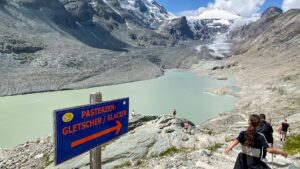FS 2.121
Glacier and permafrost risks in a changing climate
This session is archived
Details
Full Title
FS 2.121: Glacier and permafrost risks in high mountains under climate change: from process understanding to disaster risk managementScheduled
TBATBAConvener
Co-Convener(s)
Koppes, Michele; Frey, Holger; and Clague, John J.Assigned to Synthesis Workshop
Thematic Focus
Cryo- & Hydrosphere, HazardsKeywords
Glacier, permafrost, hazard, risk, high mountain
Description
The cryosphere is a key component of high mountain systems, controlling their dynamics. Climate change is causing the cryosphere to degrade at unprecedented rates, with severe consequences on natural instability. Glacier and permafrost hazards, which are the focus of the IACS/IPA Standing Group GAPHAZ, existed in the past, but are increasing in size, frequency, type and location in response to ongoing climate change, producing catastrophic process chains. This session invites contributions aimed at enhancing our understanding of such hazards, including glacial lake outburst floods, ice and rock avalanches from steep glaciers and frozen slopes, glacier surges, destabilization of rock glaciers and other periglacial slope movements, and the interactions with earthquakes and volcanic activity. We welcome contributions that consider past, present and future hazards, as well as all components of risk. Contributions that provide insights into hazard and risk assessment, monitoring and modeling, and/or strategies to prevent, mitigate and adapt to the impacts of climate change are encouraged.


